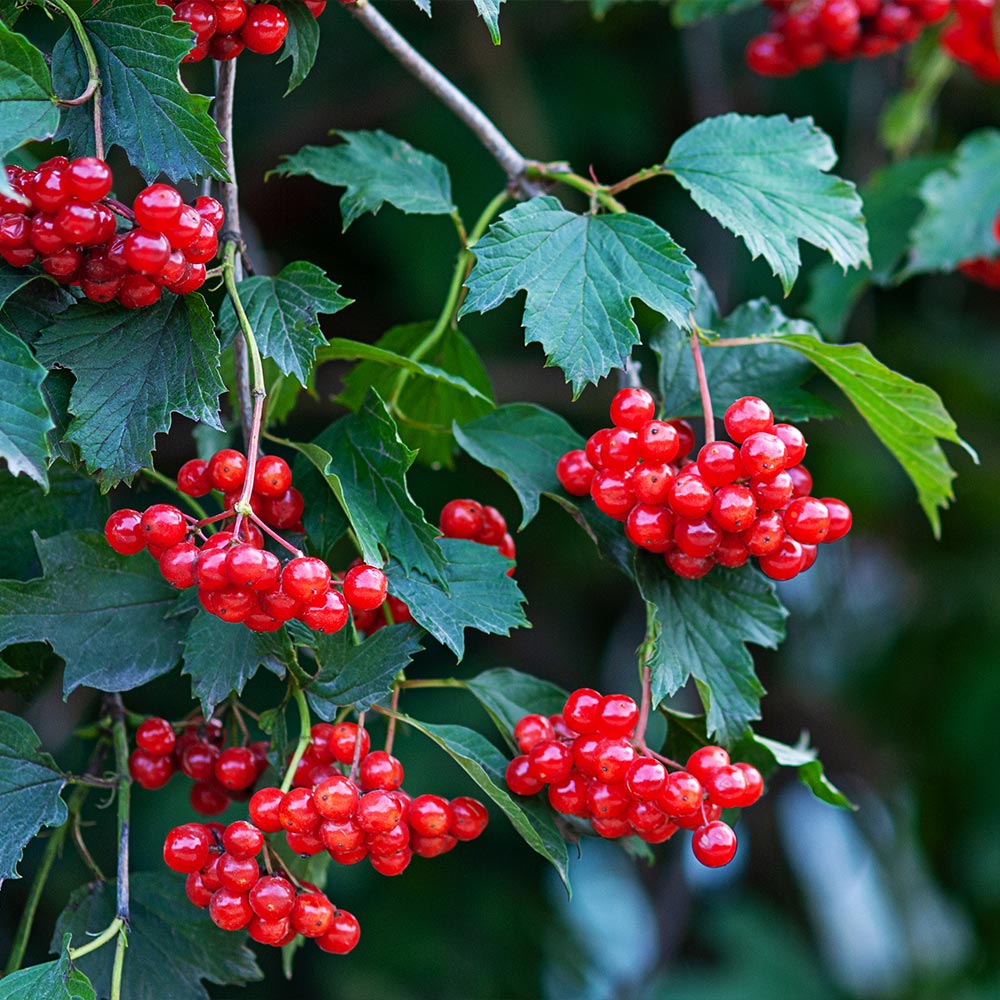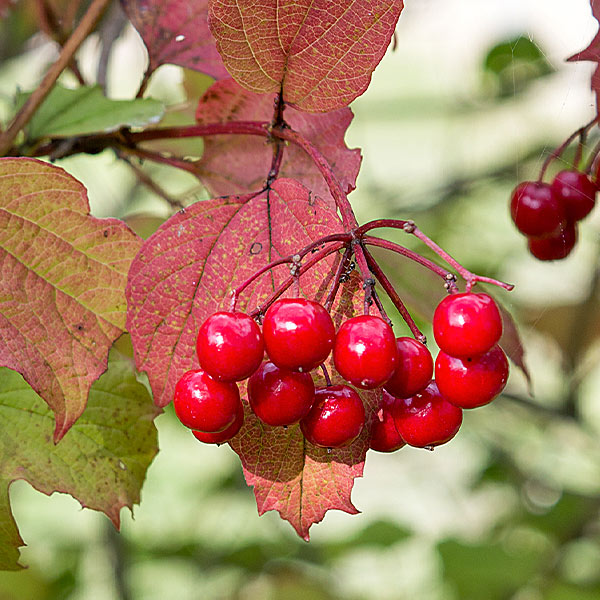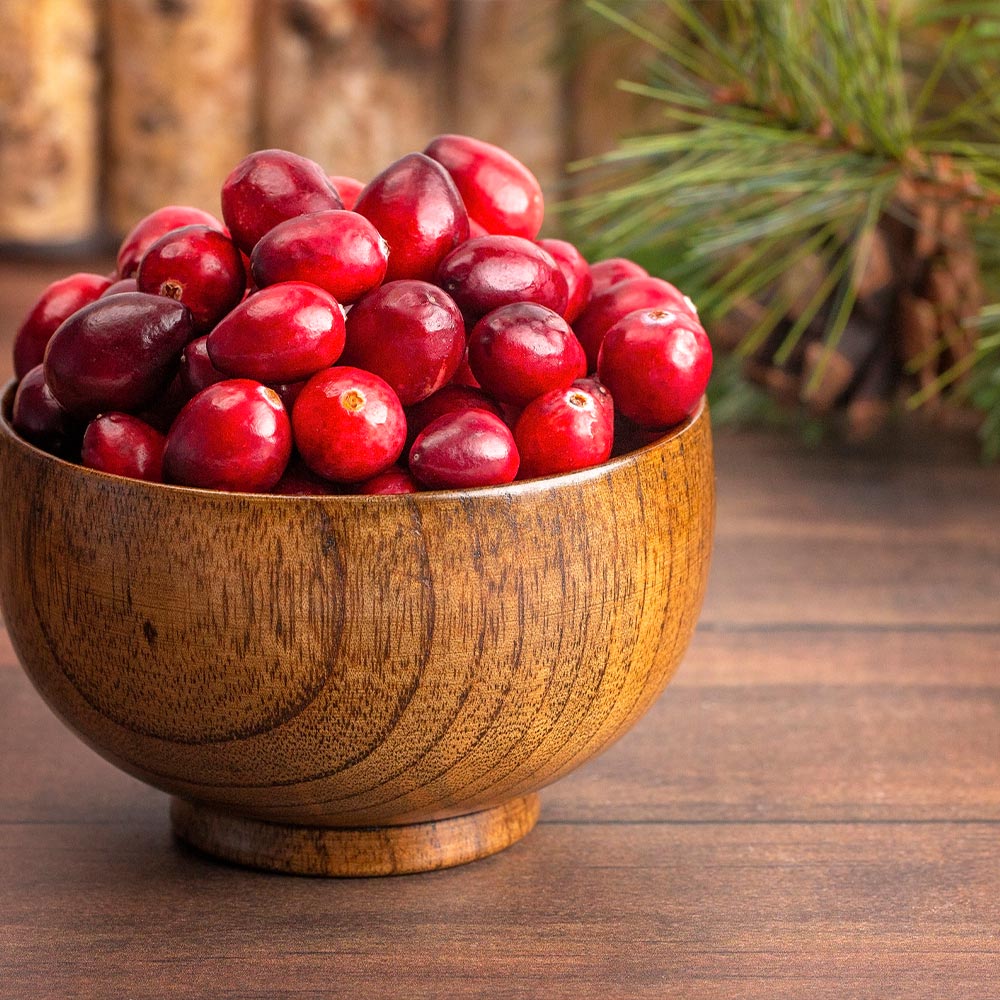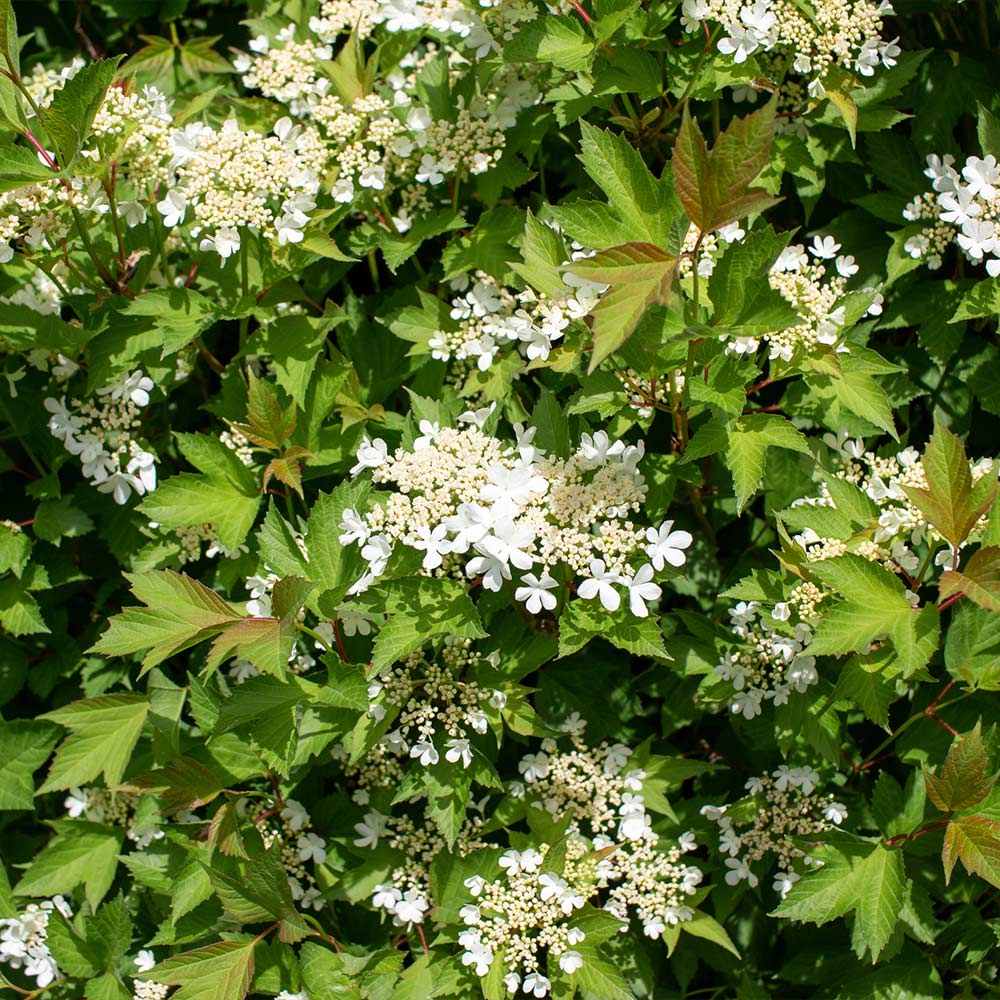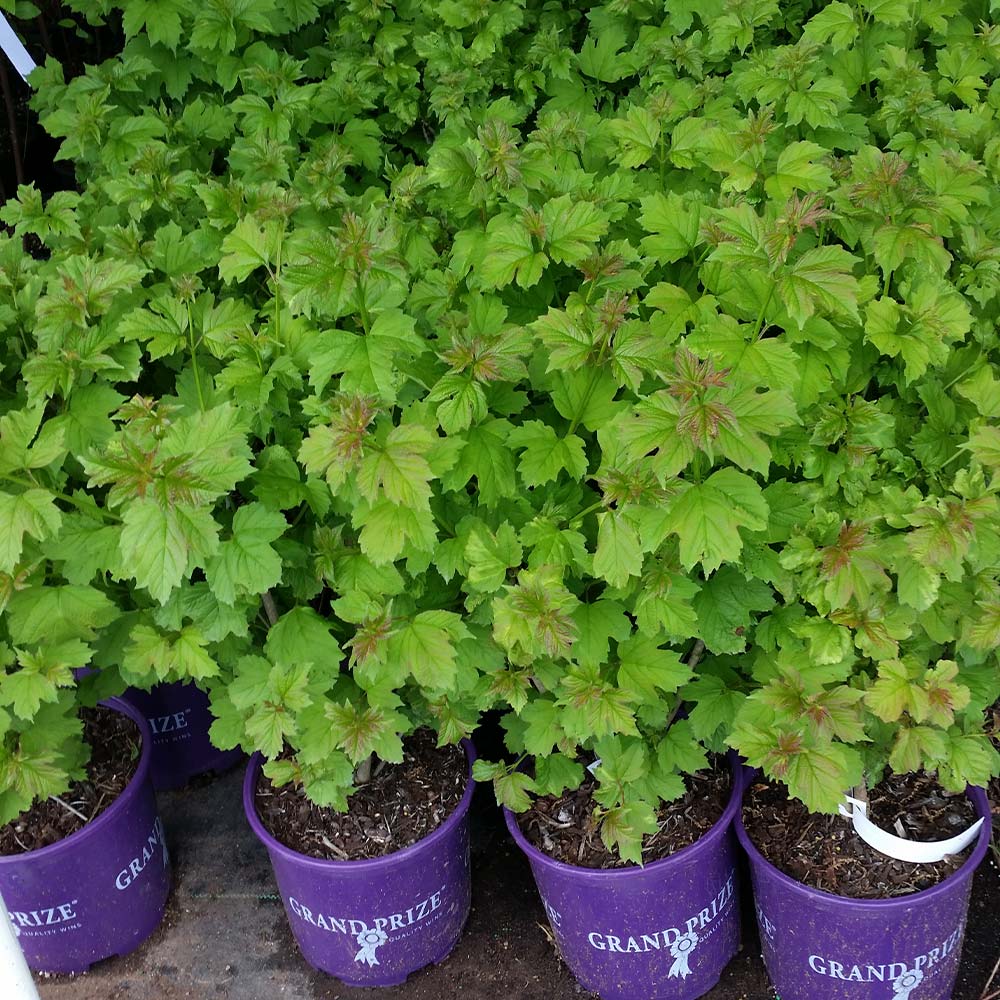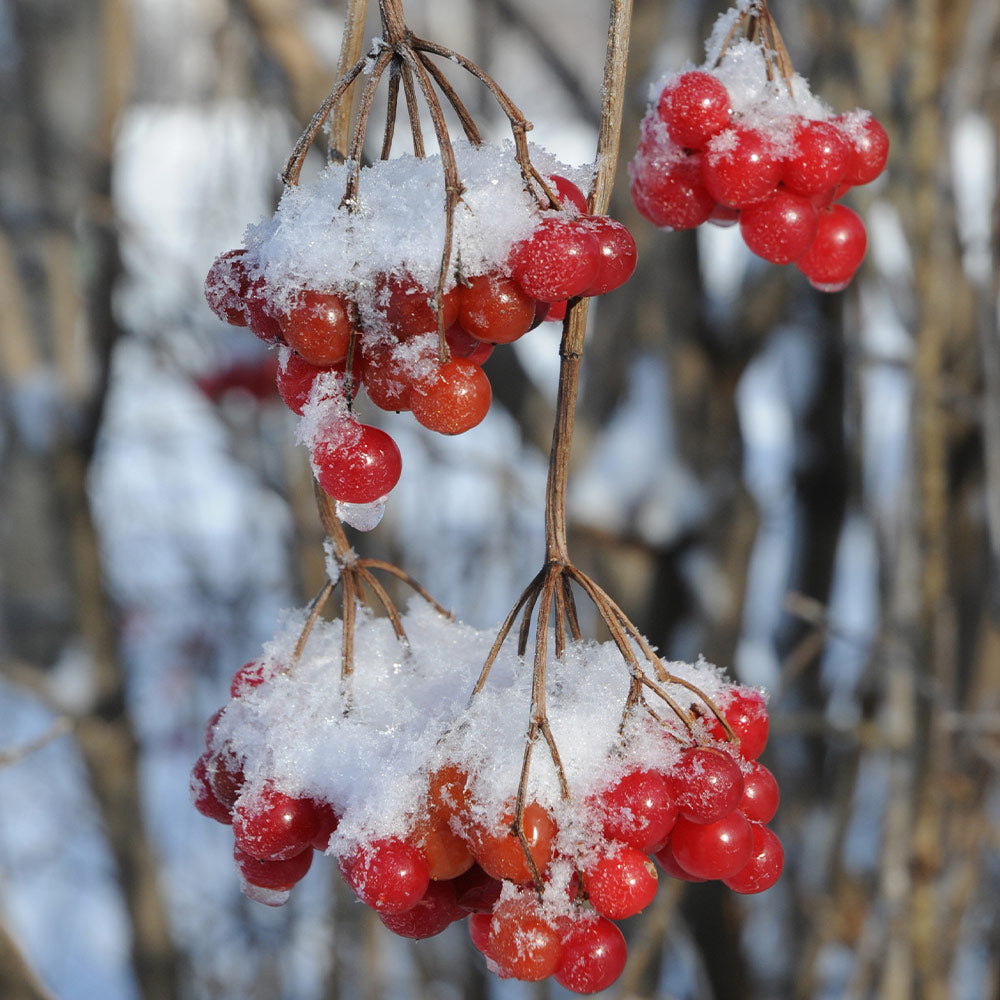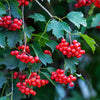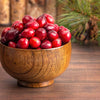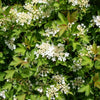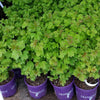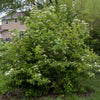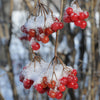* Images shown are of mature plants

Have questions? Talk with our Plant Experts (800) 973-8959
Edible Cranberry Presents Healthy and Delicious Fruit
There's a lot to like about this flowering edible shrub. The deciduous American Cranberry bush is hardy, maintenance-free, adaptable, and it adds attractive year-round interest to your landscape.
Native to North America, this sizeable ornamental sports dense upright branches that grow into a full mounded form. Vibrant deep green leaves occur in opposite pairs that are 3-lobed.
Springtime brings an abundance of flat, cream-colored flowers in broad groupings that have a lacy and delicate appearance. Clusters of plump berries follow, starting out green and turning yellow-orange and finally bright scarlet by fall.
As autumn approaches, American Cranberry's outstanding emerald green leaves begin turning gorgeous shades of orange, crimson and burgundy. Once the leaves begin dropping, the fire-engine red berries become even more visible, creating a dazzling display.
If allowed to remain, these stunning bunches of berries will hang on the shrub through the winter. This not only offers radiant warm color to an often monochromatic and frosty landscape, but also provides a much-welcomed nosh for birds and small mammals when food sources are in short supply.
Maturing to heights of 5-6 feet with a similar spread, the American Cranberry bush can be planted in rows and clipped to take shape as a stunning privacy hedge. With its upright and naturally rounded shape, this shrub can be grown in small groupings for accent, or used as a specimen plant to set off the corners of your home.
Thriving in zones 2-7, the American Cranberry bush grows nearly anywhere in the country. It does well in full sun or shade and prefers a well-drained soil rich in natural matter to help retain ample moisture. The American Cranberry bush should not be allowed to dry out for extended periods of time.
Feed with a balanced fertilizer once a year, if desired, and apply a 2-4 inch layer of organic mulch around the base of the shrub to protect against cold and keep the soil moist. Thinning out older stems, along with a bit of strategic trimming will rejuvenate the plant and help maintain its desired size and shape.
Try them dried as a sweet 'anytime' snack, whip up a batch of delicious jam, or press them to make a tasty juice. Of course, you should try your hand at some fresh Cranberry sauce to accompany your Thanksgiving turkey or roasted chicken any time of the year.
Besides the great health benefits and sweet taste, Cranberries are great for crafters to own. During the fall and winter holidays, you can cleverly incorporate Cranberries into your home decor for very little cost. The vibrant red berries and rich green leaves are an inexpensive and eye pleasing addition to existing wreaths, swags and bouquets.
For questions about the American Cranberry bush, or any of our other fantastic plants and trees, don't hesitate to contact us. Let our knowledgeable staff assist you with your next landscaping project.
Pollination Info
American Cranberry Pollination
American Cranberrys are self-fertile. You will get fruit with only one plant. However, adding an additional American Cranberry will drastically increase the size of your crop.
Planting & Care
The american cranberry (Viburnum trilobum) is a lovely addition to any home landscape, with edible berries that are very similar in appearance/taste to a cranberry, but are not a true cranberry. This shrub moderate grower pushing out about 2 feet per year into a nicely rounded shape, reaching up to 10 feet wide/tall, it can be easily pruned for a smaller overall size. This is a cold loving plant, growing in USDA zones 2-7, but it does not care for heat or times of drought. This plant brings 3 seasons of attraction to your yard. Blooming in the spring with creamy, white flowers against dark green foliage. In the fall season the leaves turn shades of red, yellow and purple. The berries begin to ripen into a brilliant red that can persist throughout the winter providing food for you and woodland critters.
Location: The american cranberry is a full sun plant needing a minimum of 6 hours of direct light. They prefer alkaline, moist soil, but not standing water. They can tolerate drier soil once established but are not drought tolerant. These shrubs can be used as a deciduous hedge, a specimen plant, or a mixed border.
Planting directions: Once you have chosen your ideal location, it is time to plant your shrub. The ideal soil pH is 6.6 to 7.5 range for best results.
1) Dig a hole that is 3 times the width of the container that your cranberry arrived in and just as deeply.
2) Remove the plant from the container and lightly comb the roots with your fingers to loosen them so that they spread out more readily.
3) Position your plant so that it is upright and centered in the hole.
4) Tamp the soil as you backfill the hole with a mixture of 60% native soil and 40% compost or garden soil. Use a test kit to determine the pH of your soil, if the pH is low you can use lime to raise it.
5) Water the plant well when done to saturate all of the roots and the planting area. Make sure that the area drains well so that the roots are not in standing water.
6) Mulch the planting area with a 3-4 inch thick layer of mulch to protect the roots from the cold temperatures as well as helping the plant to conserve the moisture that you are giving the tree.
Watering: American cranberry bushes prefer soil that is moist but not wet. They like well draining soil, but do not like to dry out more than approximately 2 inches down before getting watered again. Frequency of watering will depend on your soil type, climate, and current weather conditions. They will need more water during times of heat and drought and less during cooler periods.
Pruning: American cranberries bloom on old wood, for maximum flowering prune the plant after it is done flowering so that it can form new buds before the following spring. They do not require much pruning except for shape, and if you want to control the overall height of the plant.
Fertilizing: American cranberries do not need much fertilization to thrive. If your leaves begin to fade in color, you can use a small amount of nitrogen fertilizer, providing too much nitrogen will inhibit flower and fruit production. Compost is a good fertilizer for these plants as it is not too high in nitrogen.
Shipping Details
Estimated Shipping Time: Most orders ship immediately. As noted on the website, some items are seasonal, and may only ship in spring or fall. Once your order is shipped, you'll receive an email with a tracking number.
| Amount of Order | Shipping Charge |
|---|---|
| Less than $49 | $19.95 |
| $49 + | FREE SHIPPING! |
Product Details
| Mature Height: | 5-6 ft. |
| Mature Width: | 5-6 ft. |
| Sunlight: | Full-Partial |
| Growth Rate: | Fast Growing |
| Botanical Name: | Viburnum trilobum 'Wentworth' |
| Does Not Ship To: | AK, AZ, HI, OR |
| Grows Well In Zones: | 2-7 outdoors |
| Your Growing Zone: | # |

